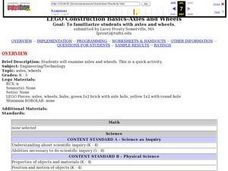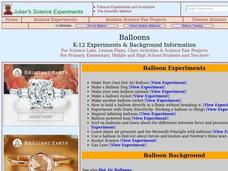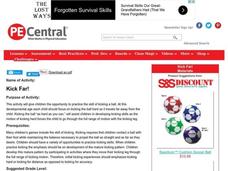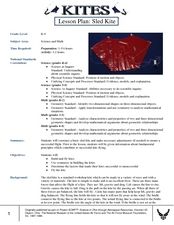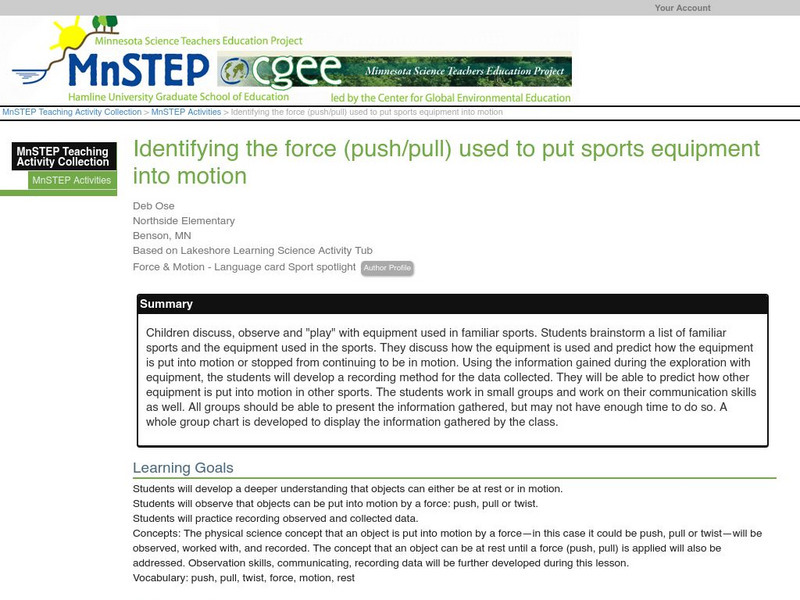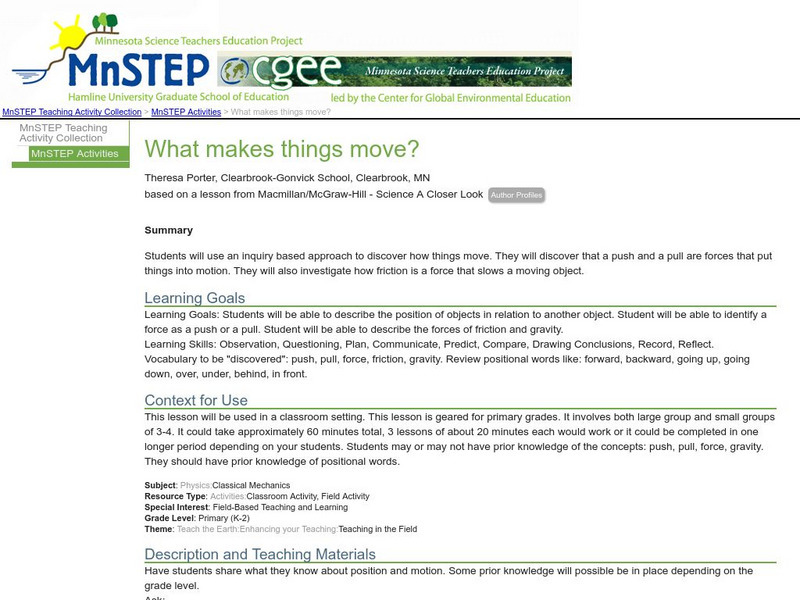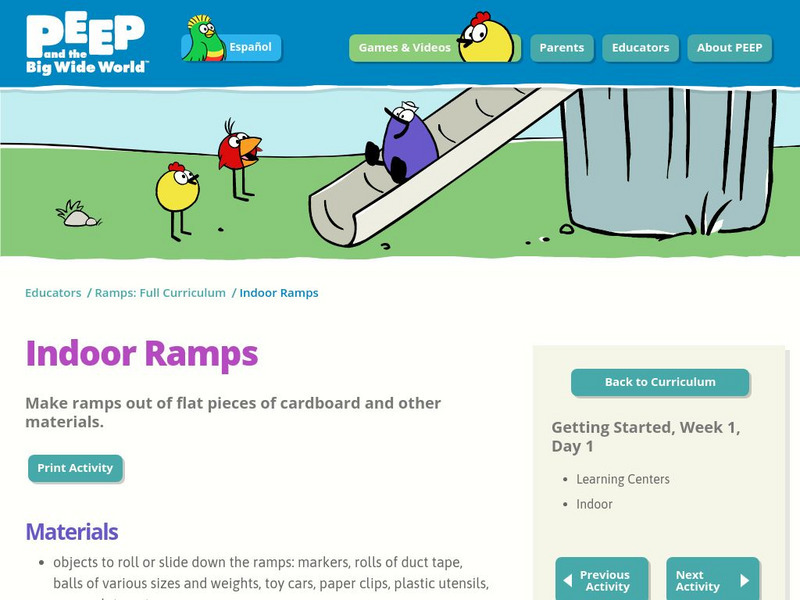Curated OER
Recognizing Litter
When does trash become litter? Use this litter awareness lesson to help them understand the importance of trash disposal. Get learners engaged by reading Nancy Loewen's Lady Lulu Liked to Litter (not included). After discussing what...
Curated OER
Ocean Currents
Learners discover the geography of Earth by analyzing water currents. In this oceanography lesson plan, students create visual references on a map of the globe where and why major ocean currents are moving water. Learners...
Curated OER
Dance: Water Dancing
Examine the way water moves, drips, and splashes with an expressive dance. Learners discuss the ways in which water moves, then create dance sequences that show or describe water. There are several suggestions to adapt this lesson to...
NASA
Launch Altitude Tracker
Using PVC pipe and aquarium tubing, build an altitude tracker. Pupils then use the altitude tracker, along with a tangent table, to calculate the altitude of a launched rocket using the included data collection sheet.
NASA
Pop! Rockets
Off they go — launching rockets is fun. The lesson plan contains templates to build paper rockets that can be launched from a PVC pipe launcher. Individuals or groups build the rockets and determine the shapes for their fins. Included...
Curated OER
LEGO Construction Basics-Axles and Wheels
Students examine axles and wheels using LEGO materials. They investigate the uses of axles, gears, and wheels.
Curated OER
Electrical motors
Students investigate and experiement with a 9-volt motor. They will use the connecting wire and battery pack to discover fans.
Curated OER
Balloons
Students explore the different types of balloons. In this materials lesson students can complete several experiments including building their own hot air balloons, making balloon animals and experimenting with static...
Curated OER
Let's Take a Rock Apart!
Students examine a crushed rock and sort the minerals they find in that rock by color and other properties.
Curated OER
Sled Kite
Pupils make and fly a sled kite out of plastic garbage bags, dowel rods, and more. In this kite lesson plan, students plan the kite to have symmetry and make adjustments as they test it.
Science Education Resource Center at Carleton College
Serc: Investigating Motion With Marbles
In this guided inquiry activity, students will use 2 marbles of different size and a box to investigate what makes the marbles move and what will cause the marbles to change speed and direction.
Better Lesson
Better Lesson: A Change of Direction Exploring the Impact of Forces
Students will be able to determine a way to change the direction of a moving object by conducting a simple experiment. Included in this lesson are videos of the activity in action, a printable recording sheet, pictures of the set-up for...
Science Education Resource Center at Carleton College
Serc: Investigating Motion: What Causes Objects to Move?
Young scholars will have an opportunity to determine what makes everyday objects move. Students will be given objects and asked to make predictions on how far each object will move after they blow on it. Then they will measure the...
Science Education Resource Center at Carleton College
Serc: Investigating Motion: Paths of a Marble
In this activity, children will investigate the paths that marbles take once set into motion and then how to change those paths, noting if and how they change.
Science Education Resource Center at Carleton College
Serc: Identifying the Force Used to Put Sports Equipment Into Motion
Children discuss, observe, and play with equipment used in familiar sports, and then brainstorm a list of familiar sports and the equipment used in the sports. They discuss how the equipment is used, and predict how it is put into motion...
Science Education Resource Center at Carleton College
Serc: Mn Step: What Makes Things Move?
In this activity, young scholars will learn about push and pull forces that make things move. They will also practice using position words to describe location. To learn about forces, they will move objects, observe the movement of...
Utah STEM Foundation
Utah Stem Action Center: Push or Pull?
This super simple activity for kindergarten-age young scholars requires no materials and can be done inside or outside, or both and explores forces and motion.
PBS
Wgbh: Peep and the Big Wide World: Introduce Ramps
An introductory activity where learners discover the way things roll and slide down ramps and hills.
PBS
Wgbh: Peep and the Big Wide World: Roll or Slide?
A classroom activity where students discover whether an object rolls, slides, or stays put.
Science Education Resource Center at Carleton College
Serc: Marble Stop
In this two-part instructional activity, young scholars will discover that no matter what the shape of the track, the marble will rise to the same vertical height. They will begin to understand the concepts of gravity, motion, and force.
PBS
Pbs Learning Media: The Ruff Ruffman Show: Tower Time
Explore structural science and try to stack a tall, stable tower in this building activity.
PBS
Pbs Teachers: Balloon & Straw Experiment
Investigate air pressure, motion and the forces of air currents using a bendy straw, a balloon and a rubber band.
PBS
Wgbh: Peep and the Big Wide World: Indoor Ramps
Have students make ramps out of flat pieces of cardboard and other materials.





